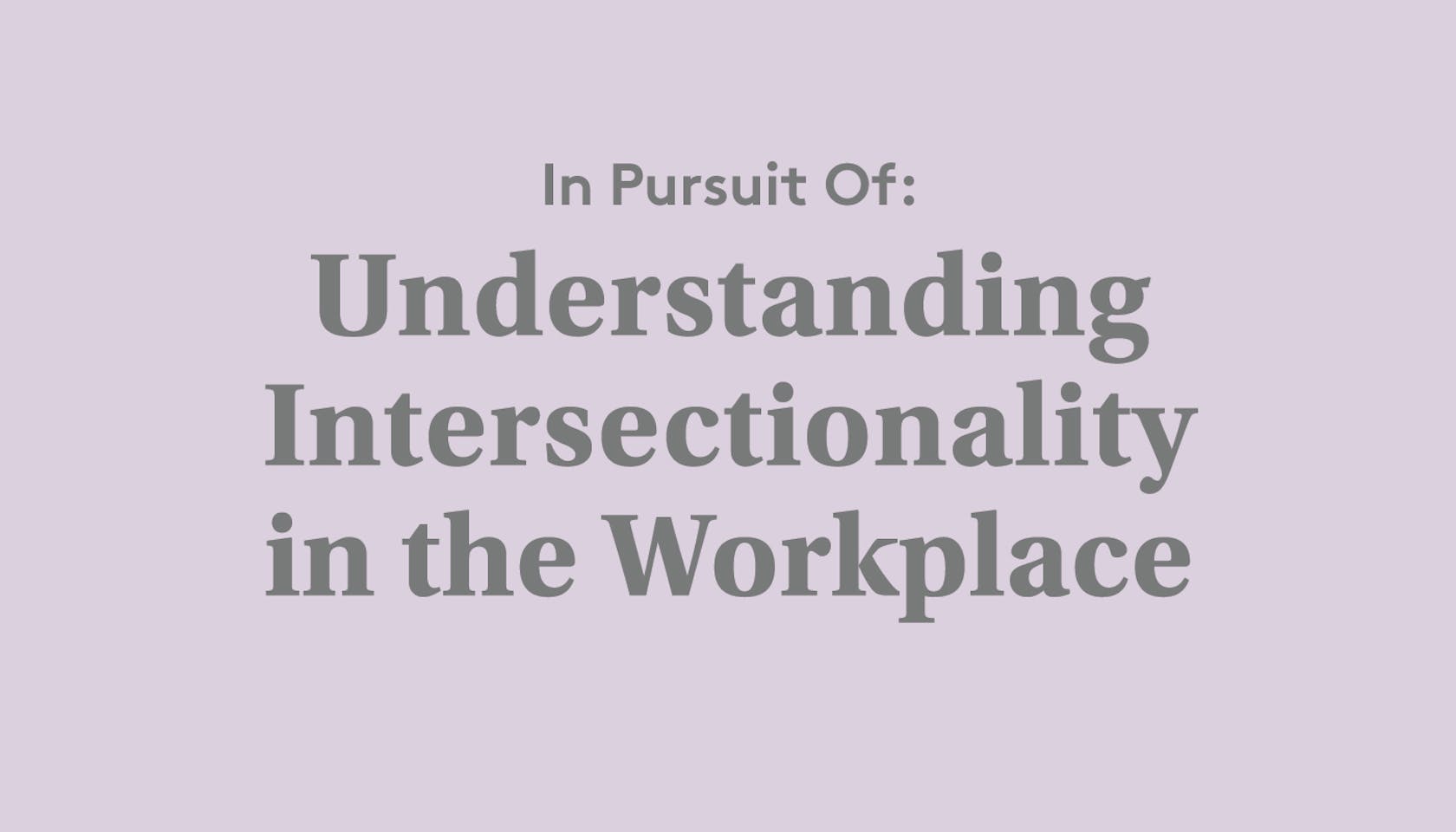July 11, 2018
In Pursuit Of: Understanding Intersectionality in the Workplace

In its simplest form, an intersectional approach seeks to recognize that every persons identity consists of multiple dimensions. Intersectionality refers to the complex and cumulative way that the effects of different forms of discrimination (such as racism, sexism, and classism) combine, overlap, and intersect to form unique disadvantages we might not normally see.
In order to apply this understanding of how some people face challenges based on their overlapping identities, we talked to Dr. Ella L. J. Bell Smith, an expert in the field of organizational behavior and a professor of business administration at Dartmouths Tuck School of Business. If youre hoping to help promote and support the goals of intersectionality in your own workplace, the following four tips are a great place to get started.
Become active in your workplace diversity efforts.
The first step to understanding how your position impacts intersectionality is to ensure that you understand your workplaces long- and short-term goals. If possible, consider consulting your employee handbook or setting up a meeting with human resources. Not only is this a smart way to learn about your companys beliefs and aspirations, but youll then be able to analyze how your role might help (or hurt) these goals.
Furthermore, remember that even employees in entry level positions can affect change and become unofficial spokespeople for diversity and inclusionwhether you think the issues directly apply to you or not. According to Dr. Bell, its vital for everyone to ruminate on the following questions: Whos missing in your circle? Who are you developing? What can be done to promote a safer, better and more fair work environment for those who may be dealing with inequality? Whether you hold sway in the decisions behind new hires and promotions, or serve as a resource for a group of interns, or decide what type of cuisine will be served at the next company party, think about how your position and choices impact all of your colleaguesnot just those who you feel most comfortable with.
Participate in employee discussions regarding diversity.
For some people, it may be uncomfortable to discuss sensitive topics, especially within todays heated political climate. Yet, as Dr. Bell says, We cant live in a world where there is such deep racial hatred at this moment [sic] and not bring our fears, attitudes, and anxieties into the workplace. Therefore, she recommends that companies start holding discussions referred to as courageous conversations.
Ideally, these conversations would begin at the top. When your boss can demonstrate an ability to talk about their thoughts and feelings, it opens the door for everyone else, Dr. Bell says. Yet, if these discussions start in more casual settingslike while waiting to use the microwave in the office kitchenremember to, above all else, remain an open-minded listener. Sharing personal experiences with each other can allow for increased awareness about the perspectives and backgrounds present in your workplace, but without respect these conversations can fall apart.
Commit to becoming culturally competent.
Although some of your coworkers may be open to answering questions about experiences theyve had due to their identity, Dr. Bell notes that we should always take it upon ourselves to learn about different cultures, religions, and backgrounds represented at our workplaces. Think of it this way: any knowledge or understanding that you gain will also help you grow as an individual, an ally, and an employee.
Dr. Bell has a few basic but powerful tips to become more culturally competent. To begin, she recommends that people read as much as possible, particularly on the subject of history. You should also seek ways to get out of your comfort zone, like by attending other cultural groups festivals, eating in unfamiliar restaurants, or travelingeven if you can only venture as far as a different neighborhood.
Value other peoples perspectives.
As noted by Dr. Bell, intersectionality can be a powerful tool for understanding and addressing differences. Enacting the goals of intersectionality can mean the difference between creating a workplace where people thrive and further worsening peoples experiences of discrimination. Luckily, helping to build a respectful work environment is simpler than many people realize. Treating other people the way that they want to be treated is a good start.
Overall, its deeply important that everyone around you feels respected and heard. A workplace can be filled with employees from all different backgrounds, but if people dont work on a daily basis to make everyone feel welcomed, this doesnt matter. Thus, focus on doing more than just understanding the goals of intersectionality. Instead, as Dr. Bell puts it, march your actions.